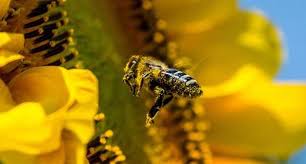Our Blog
Home / Blog
Impacts Of Invasive Alien Species On Honey Bees

In the delicate ecosystem that sustains life on our planet, the honey bee plays a pivotal role. As nature’s pollinators, honey bees contribute to the growth of fruits, vegetables, and countless flowering plants. However, this crucial ecological balance is now facing a silent threat – invasive alien species.
Introduction:
The enchanting buzz of honey bees is synonymous with the blooming of flowers and the promise of a fruitful harvest. Yet, the invasion of non-native species is disrupting this harmonious relationship, posing severe consequences for both honey bees and the ecosystems they support.
1. Altered Foraging Patterns:
Invasive alien species often introduce new competitors for resources, affecting the foraging patterns of honey bees. The increased competition for nectar and pollen can lead to altered flight paths and reduced access to vital food sources, impacting the overall health of bee colonies.
2. Competition for Nesting Sites:
The invasion of certain species can result in heightened competition for nesting sites. Native pollinators, including honey bees, may find themselves in direct competition with invasive species for limited shelter, potentially leading to the displacement of native populations.
3. Spread of Diseases:
Invasive alien species can act as carriers of diseases that may be harmful to honey bees. The introduction of new pathogens, often unintentionally, can result in increased susceptibility to infections within bee populations, potentially triggering colony collapse disorder.
4. Disruption of Plant-Pollinator Relationships:
The intricate dance between plants and their pollinators, perfected over millennia, is under threat from invasive species. Honey bees may find themselves entangled in complex interactions with non-native plants, disrupting the finely tuned relationships that have evolved between local flora and fauna.
5. Genetic Dilution:
Interbreeding between honey bees and invasive species can lead to genetic dilution within native populations. This can impact the adaptability and resilience of honey bees, potentially reducing their ability to withstand environmental stressors and changing climate conditions.
Conclusion:
The impacts of invasive alien species on honey bees are a stark reminder of the interconnectedness of ecosystems and the fragility of our natural world. As custodians of the environment, it is our responsibility to address and mitigate the factors contributing to the introduction and spread of invasive species. Through heightened awareness, responsible practices, and concerted conservation efforts, we can strive to protect the invaluable contributions of honey bees to biodiversity and food security. Only through collective action can we ensure that the sweet hum of honey bees continues to resonate in the tapestry of life.





